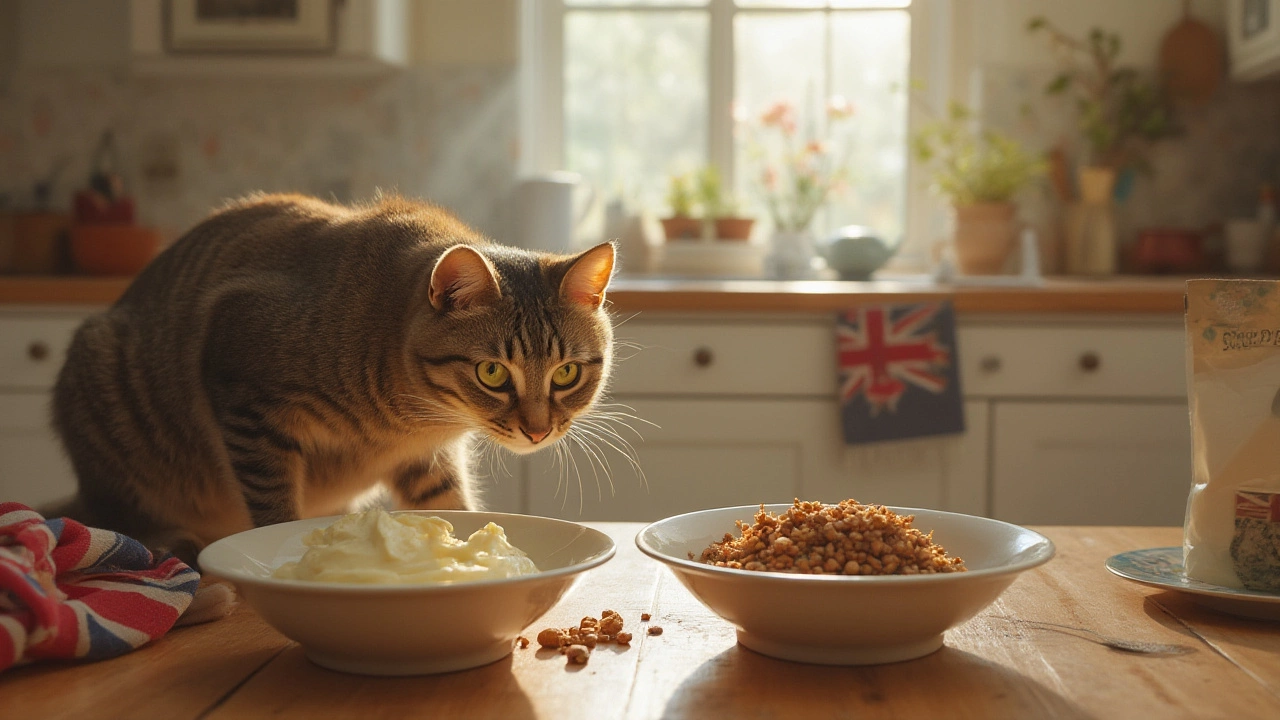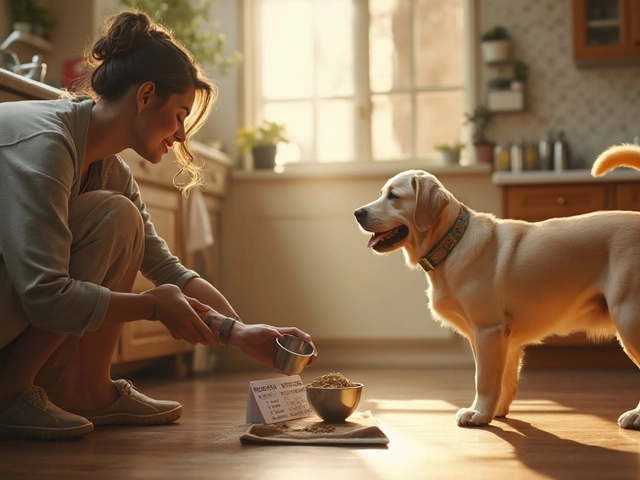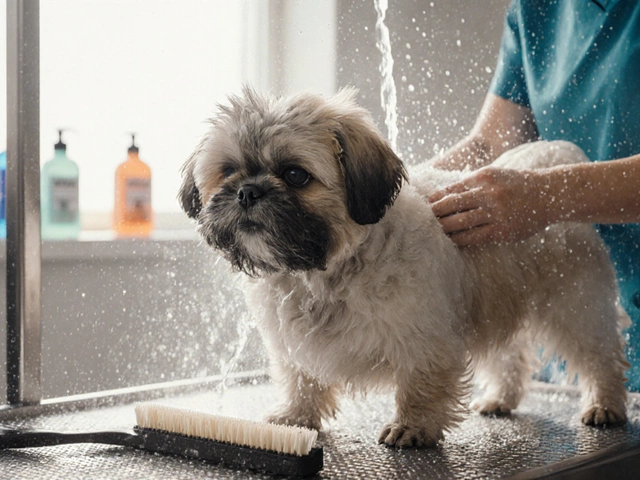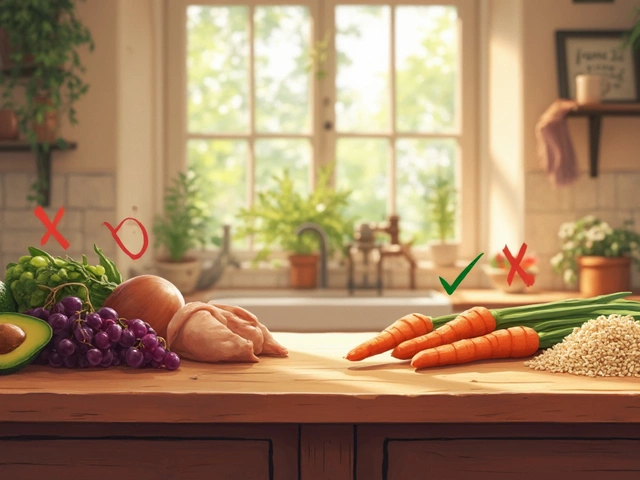If you’ve ever stood in the cat food aisle staring at an overwhelming wall of cans and pouches, wondering if your cat would give you the side-eye for picking pate over shreds, you’re not alone. This debate isn’t just about preference—it actually matters for your cat’s health, happiness, and even their playfulness. The choice between pate and shredded food goes deeper than marketing or nice packaging. If you know what makes each type tick, you’re miles closer to winning your cat’s approval (and possibly their affection).
What Sets Pate and Shreds Apart?
Pate and shreds might look similar when you first open the can. But their textures and how they interact with your cat’s instincts couldn’t be more different. Pate is like blended-up meat loaf—smooth, uniform, and meant to hold together like a thick paste. Imagine spreading a soft butter compared to scooping out pulled chicken—that’s the difference. Shredded cat food is made of strips or chunks of meat in broth, with real visible fibers. It’s closer to what a cat would naturally tear off a bird or mouse, according to animal behaviorists in New Zealand who often see feral cats seek out these ‘muscle meat’ textures in the wild.
There’s more at stake here than taste buds (though cats are notorious for being fussy). Texture affects how cats eat, how their bodies digest food, and even their hydration. Pate, since it’s pre-mashed and moist, is easier for cats with dental problems or older cats who struggle with kibble or tearing chewy meat. If you crush up pate with a spoon, it practically turns into a pudding. Shreds are a workout: cats chew, tear, and savor. For some cats, this natural action encourages more thorough chewing, which can stimulate the gums and help with dental health—but not as much as actual dental treats or toys.
If you want to see how these foods stack up side by side, here’s a simple comparison:
| Characteristic | Pate | Shreds |
|---|---|---|
| Texture | Smooth, uniform | Fibrous, chunky |
| Best For | Elderly cats, dental issues | Young, active cats |
| Moisture Content | High, but varies | Very high due to broth |
| Feeding Ease | Easy to eat, even for kittens | Requires chewing and tearing |
| Palatability | Varies – some love, some refuse | Excites natural hunting instinct |
| Popular Brands | Fancy Feast Classic, Royal Canin, Nutro | Weruva, Wellness, Sheba Perfect Portions |
Why Texture Really Matters to Your Cat
Think of how excited your cat gets when you open a tin of tuna or the drawer with the treats. Texture is a big deal for felines. Studies like the 2022 Massey University research here in New Zealand showed that texture is the #2 reason cats reject food—right after smell. Taste and smell matter, sure, but if the food feels weird in their mouth? Hard pass.
This isn’t just pickiness. Feline evolutionary biology shaped sharp little teeth and rough tongues for a reason. Young, healthy cats are almost hardwired to want to shred, chew, and eat foods with texture. If you have a kitten, there’s a good chance they’ll gravitate to shreds, especially when play and eating blend together. Older cats might not have the energy or dental integrity for all that work. Pate is their friend—soft, nothing to chew, and comforting. That's why shelters often feed pate to cats recovering from surgery.
Let’s not forget hydration. Cats aren’t big water drinkers by nature. Their ancestors ate prey, getting most of their water from meat. Both pate and shreds boost moisture in the diet, but shreds in broth sometimes tip the scale. If your cat barely drinks from their bowl, opting for a shredded food in extra broth might encourage them to lap up what they need to stay healthy.
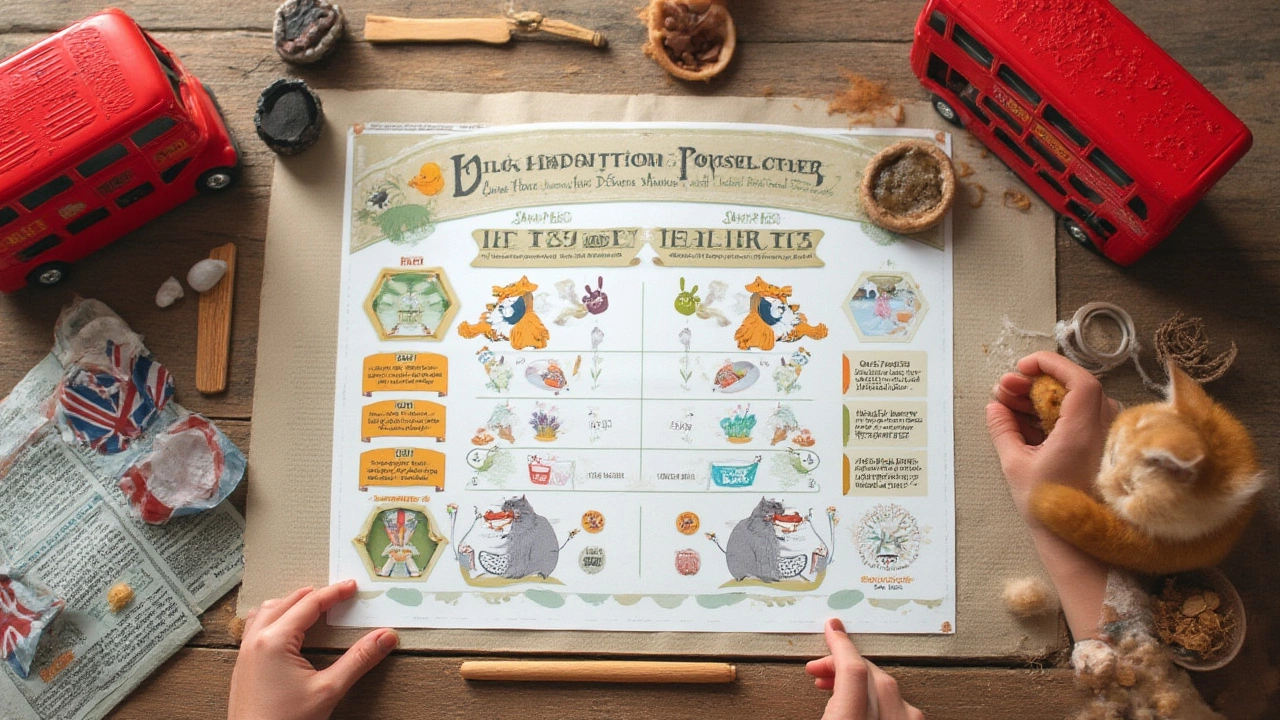
Nutrition Differences: Is There a Clear Winner?
You’d think creamy pate or chunky shreds would be night and day in nutrients, right? Not quite. Veterinarians in Auckland point out that the actual nutritional content depends more on the recipe and less on the presentation. But there are a few practical differences.
Pates generally have less added water and fillers. The core meat is densely packed, so you might be getting more protein per gram (read the can label to check). They're also easy to hide medication in, since you can mix pills right into the smooshy meat. Pates hold their form, so if your cat likes to eat slowly or leaves leftovers, it won’t dry out as fast as shredded food sitting exposed to air.
Shredded cat food often comes in a generous amount of broth or “gravy.” This is a hydration bonus, but the downside is sometimes a lower protein percentage if a lot of water gets added. Also, some shredded foods sneak in thickeners, starches, or even traces of sugar to make the broth look appetizing—it pays to scrutinize the ingredients list. If your cat’s on a special diet for kidney or urinary issues, your vet might prefer shreds just for the high moisture alone, but the protein and mineral content must still align with what the vet prescribes.
Here’s a tip: Don’t just trust your cat’s enthusiasm. Read the back of that can. A 2023 review in Australia showed many popular pates and shreds fall short on taurine, an amino acid cats need for heart health and vision. Always check for “complete and balanced” on the label, especially if it carries the AAFCO (Association of American Feed Control Officials) or NZFSA stamp—those bodies set real standards for nutrition.
Tips to Choose What Works Best—And Make Cats Happy
The answer to the big question, "Is pate or shreds better for cats?" actually depends on your cat—not you, not the ad on TV. Most Kiwi veterinarians and cat rescue volunteers will tell you: What works for one cat might be untouched by another. Here’s how to come out ahead:
- Best cat food texture depends on health, age, and personality. Active cats that love to play may thrive on shreds—they get exercise for their teeth and jaw, plus hydration. Older, sensitive, or recovering cats probably need the gentleness of pate.
- If your cat is a picky eater, try rotating textures. Sometimes, offering a little shredded food as a topper on pate, or vice versa, wins the stubborn ones over.
- Watch their bathroom habits. If you notice firmer or looser stools, weight changes, or odd litter box behavior, it could be tied to diet texture. Adjust slowly and see how their digestion responds.
- Hydration is huge. In Auckland’s humid summers, a broth-rich shredded recipe provides much-needed liquid. If you notice dry gums or thick urine lumps in the litter box, switch it up.
- Pick a quality brand, not just the cheapest can. Budget shreds might be mostly sauce, while a decent pate packs more real meat. Look for brands like Ziwi Peak (local to New Zealand!), Feline Natural, or premium imported ones—read the ingredient list!
- If your cat suddenly rejects both types, it could signal pain, dental issues or illness. A quick visit to the vet is always safer than a guessing game.
You’ll find hardcore fans of both foods. Some cats only want chunky bits they can carry in their mouth (I had one who’d place shredded pieces by the bed as "gifts"—cat owners know that feeling!). Others will only eat super-smooth, sticky pates. No two cats are alike, and that’s part of their charm.
So, take a cue from your kitty. Test small cans or pouches before splurging on a bulk pack. The right pick is the one your cat actually eats with gusto, maintains a sleek coat, normal weight, and keeps surprising you with their quirky food habits.
